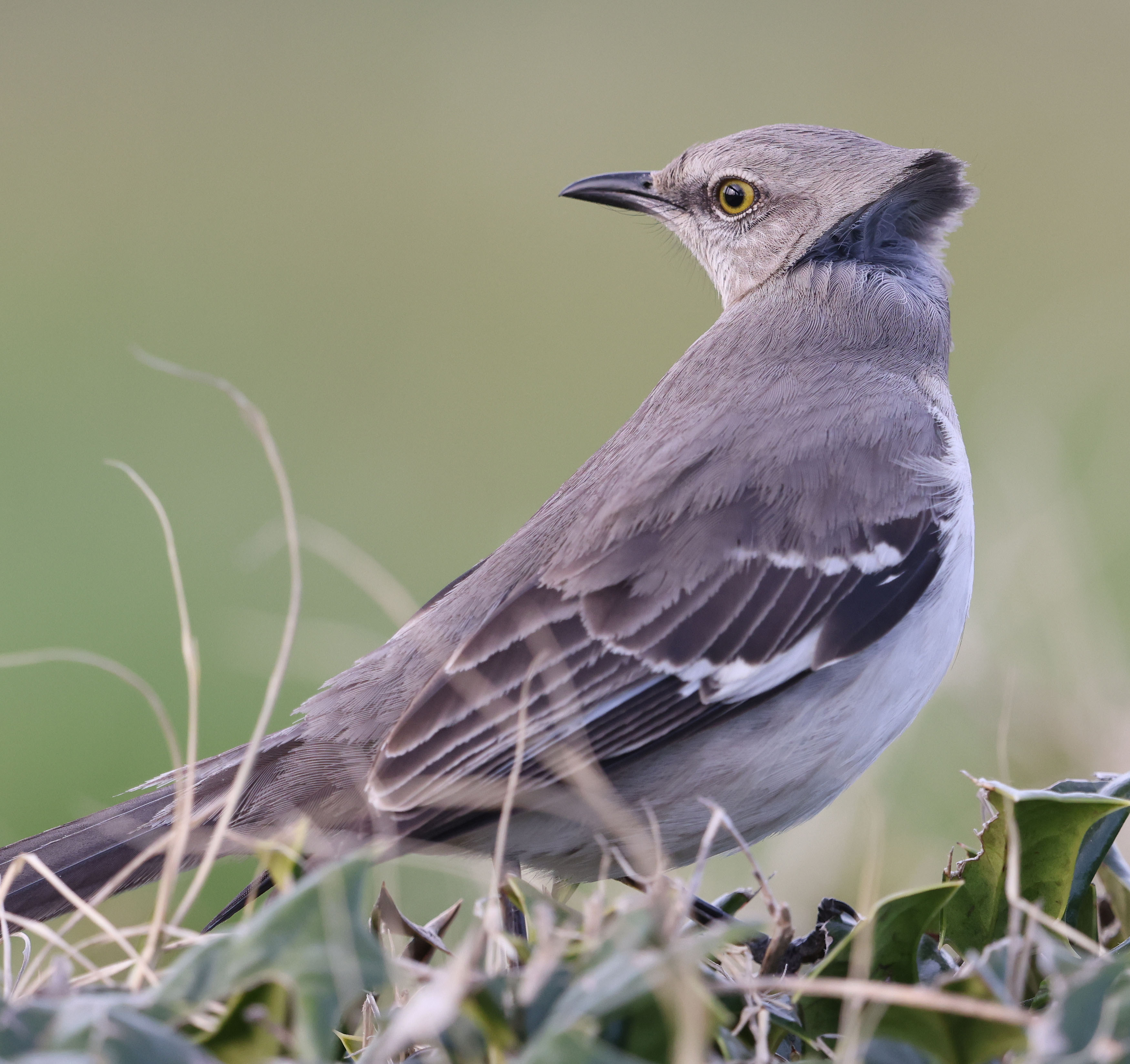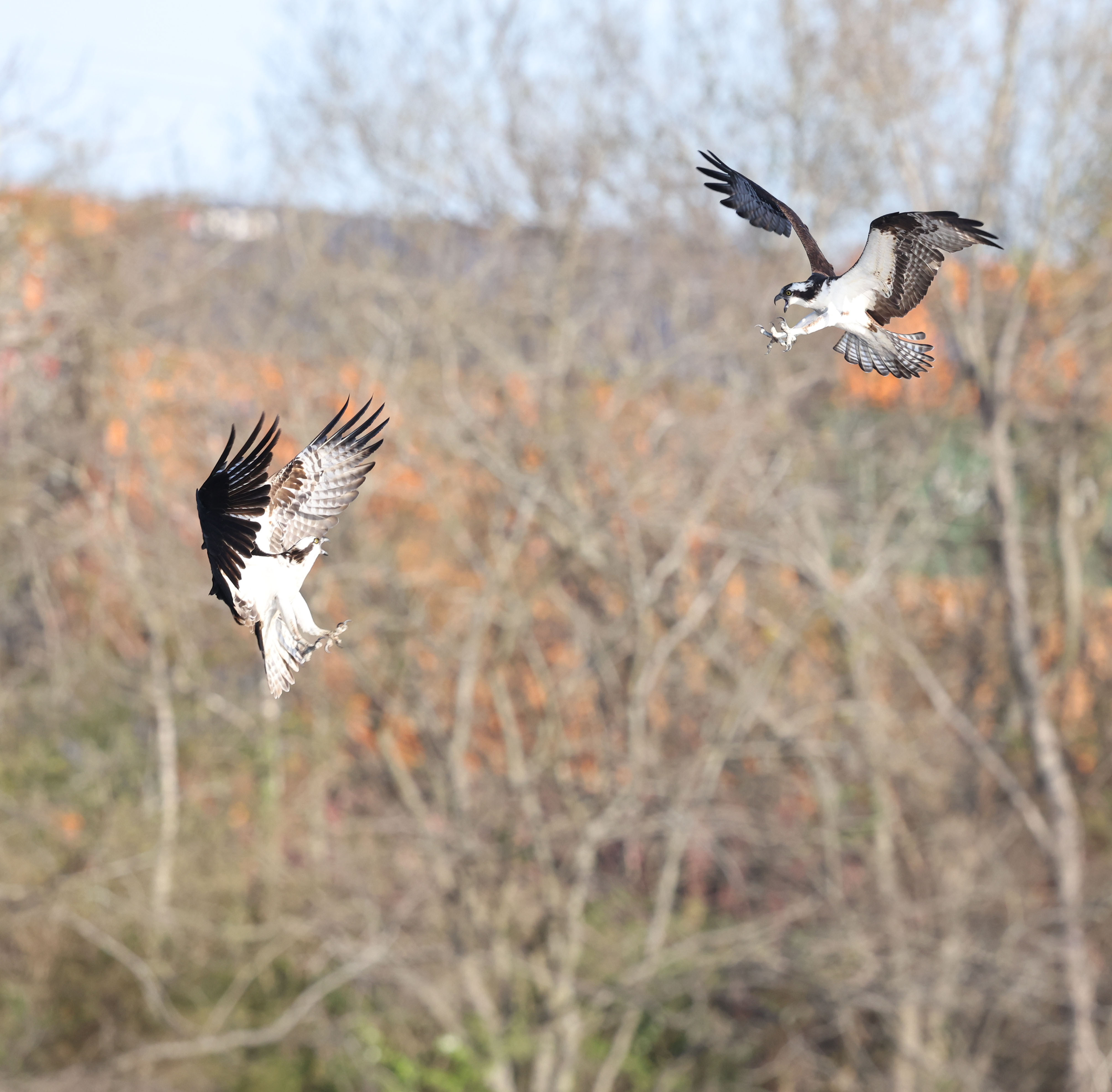We continue our review of the Canon EOS R5, which we began in “From Birds to Photo Gear.” The EOS R5 and its less well-appointed sibling, the EOS R6, were recently introduced. We’ll touch on the camera’s eye detection ability and its high-resolution sensor. Please keep in mind that this isn’t a professional review. It’s one bird photographer’s take on what appears to be an exciting, new camera.
Let’s take another look at the last photo in the above piece. When I first posted it on the photography forum, FM Forums, one person commented, “A little too much crop perhaps?” Another agreed. They thought I’d made a mistake. I replied, “It was deliberate—to highlight the detail on the back and wings. The rest of the bird wasn’t all that exciting. This area was.” FYI, I crop most of my photos; I imagine most other photographers do the same.

Someone else, who saw the image differently, chimed in, “In addition, the overall geometry of the composition is classically balanced. Don’t worry about those who can’t see that. It’s a beautiful image.” He continued, “Beautiful combination of textures, tones, layered geometrics, and overall composition. The background of gray shaded cement works very well. Kudos for your focus on these details and daring to challenge dogma.”
I was encouraged and thanked him. I also expressed surprise that someone living in Mission Viejo, CA would know anything about the composition of a bridge pier in Chesapeake, VA.
Eye Detection
You’ll recall I took the pelican photo with the Canon EOS R5 and posted it with the following message: “I used a rented Canon EOS R5 to take the shot. I think that camera and this new tech is a game-changer. Not having to use an extender and being able to crop and still get detail like this is something else. I also love the ability to compose on the fly.”
By “new tech” I was referring to the camera’s ability, using Deep Learning technology, to detect, focus on, and track both human eyes and animal eyes. Focusing on eyes is critically important, and this camera has no trouble doing it. I’m reminded of something professional photographer (and photo equipment reviewer) Bryan Carnathan wrote in his review of the Canon EOS R6: “If the eye is not in focus, the image will probably be deleted immediately.”
But the R5 does have trouble detecting eyes if birds, for example, are in trees or shrubbery. It would have a hard time detecting this eye. Situations like this call for regular 1-Point AF (autofocus), not “Eye AF.” I switched back and forth between the two while using the camera. I actually found Eye AF a bit snappier and more reliable.

It had zero trouble finding this eye. Eye AF not only worked flawlessly here, but as the little blue box (indicating the eye was in focus) stayed on the eye, I was able to move the lens and place the bird’s eye where I wanted it in the frame. I was able to compose on the fly/focus and recompose and create a rule-of-thirds photo. Incidentally, it was chilly that morning, and the bird had turned up its collar.

And it also had zero trouble here. Eye AF worked beautifully. This young man was checking out the exercise equipment in a local park, and his expression was classic kid. The background might have been cluttered, but the human subject matter made up for it. Notice the Kool-Aid t-shirt and the Nike Air sweats. Also, notice the mask, now part of his wardrobe. I’m sure he’s doing his best to follow mask guidelines.

High Resolution
Because the full-frame mirrorless R5 has a high-resolution, 45-megapixel sensor, I was able to take photos of anything and everything, crop the images as needed, and still wind up with great photos. Also, I didn’t need extra reach for distant subjects because the extra resolution provided the extra reach. Consider the close-up of the American Robin in “From Birds to Photo Gear” or the photo of the Brown Pelican above. I was able to create each of those because the original image size was huge (8192 x 5464 pixels), and I had so much to work with.
Here’s another photo I took with the R5. This is a male Osprey defending its nest against an intruder. The intruder is in the bottom left. These kinds of territorial fights are common as the breeding season gets underway. This morning, 4 other male Ospreys tried to take over the male’s nest. At one point, the female had to leave the nest and eggs to help out. She quickly returned.

I wasn’t thrilled with the photo because the intruder was overexposed. So I cropped it out and created an image of the better-exposed bird in the upper right. I had more than enough resolution to do that. Here’s the result. It’s a decent peak action shot made possible by all that resolution/all those pixels. I had enough reach, and the bird retained good detail.

And This Just In
We’ll have to end it it here. I hope you’re enjoying reading this review as much as I’m enjoying putting it together. Please stay tuned for Part 3. FYI, Bryan Carnathan has also written a great review of the R5. It’s well worth reading. Bryan is not only a great guy, but he’s a thorough and thoughtful reviewer. He’s one of the best in the business.
Here’s yet another Carolina Wren song. I recorded it on 3/21. In this 1.5-minute clip, the song changes after about 45 seconds. There, the bird breaks into a different song! Also a distant cardinal sings during the pauses as if it were duetting with the wren.
Quip, Question, Quote(s)
“The snow is melting away, the days are growing warmer and longer, and we birders look for the avian signs of spring. That first careening cry of a Killdeer, the first red-winged Blackbird, and so many others. If we let the other seasons drift in and then out, we look for spring.” More thoughtful words from Doug Chickering

“There’s a lot to look forward to in spring, including the welcomed hullabaloo of birdsong.” The National Audubon Society
As always you produced an awesome blog, with beautiful pics, camera information, and comic relief. 🤚👍🤛🤗
LikeLike
Thank you, Anonymous. I really appreciate your comment.
LikeLike